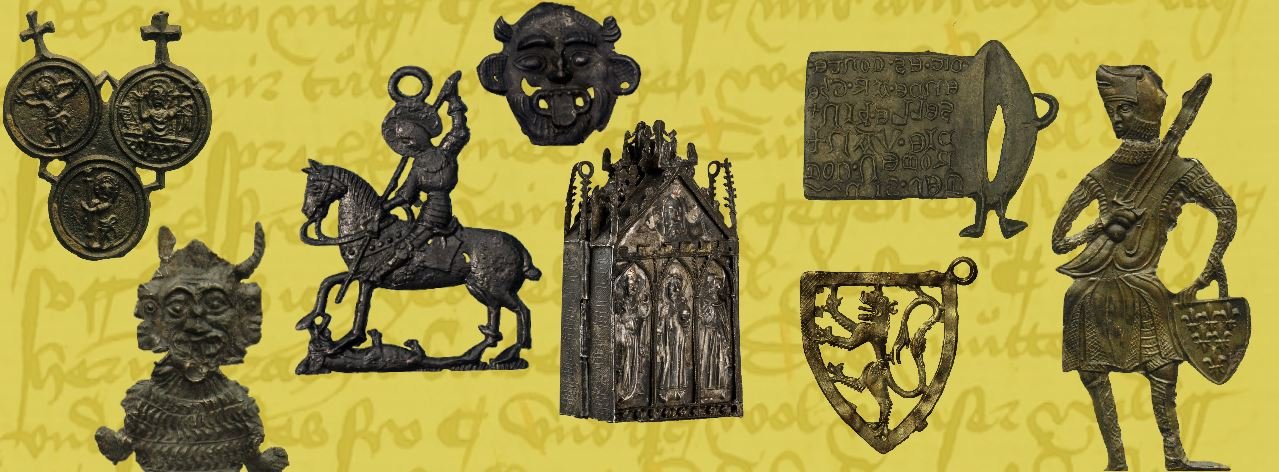
Medieval Badges
Grant Overview
Visual Communication and Community Formation in the Middle Ages: Medieval Badges
Medieval people wore specific badges to create and claim social, political, and religious relationships, and so badges participated in practices of making identity visible that were ubiquitous in late medieval Europe (clothing, hair style, head coverings, heraldic symbols). Through historical study, this project sheds light on how badges were mass-produced, transported and distributed throughout medieval Europe, reminding us that trans-regional movements of people, things, and ideas have long been a defining feature of European life. The project examines how medieval badges functioned in everyday life, where they were worn, who wore which ones, how they were understood, and what they might have meant.
The project rewrites our understanding of late medieval visual literacy, a fundamental and complex mode of communication that is still not adequately comprehended. Whether religious or profane, self-chosen or compelled, medieval badges were understood to signal community belonging. Studying medieval badges provides rich and nuanced historical depth to contemporary debates around affiliate visual signs and symbols (head scarfs, crosses, beards). Through the lens of medieval badges, this project can place current debates into historical perspective and reflect on how people have historically used visual markers of identity to unite, divide, and define communities. Studying medieval badges can provide the modern world with a long view of its own use of visual markers of identity and might influence perceptions of current issues facing Canada, Europe, and the United States.
While working with the valuable reference works and databases cataloging individual badges provides indispensable orientation in this vast body of material, it cannot replace physical examination of these small objects, whose originally shiny, eye-catching, embellished, detailed surfaces have suffered from the passage of time and are now tarnished and damaged so that original details cannot be discerned from a photograph. International, interdisciplinary collaboration and exchange offer the best possibility for advancing knowledge about regional differences in badge use and about the role played by medieval badges in visual communication and community formation.
The project supports a team of scholars, each one an expert on a unique aspect of medieval badges, in presenting new findings about medieval badges at conferences around the world. This project also supports new research into medieval badges, the publication of new findings, student learning, and the dissemination of knowledge about medieval badges to the wider public.
